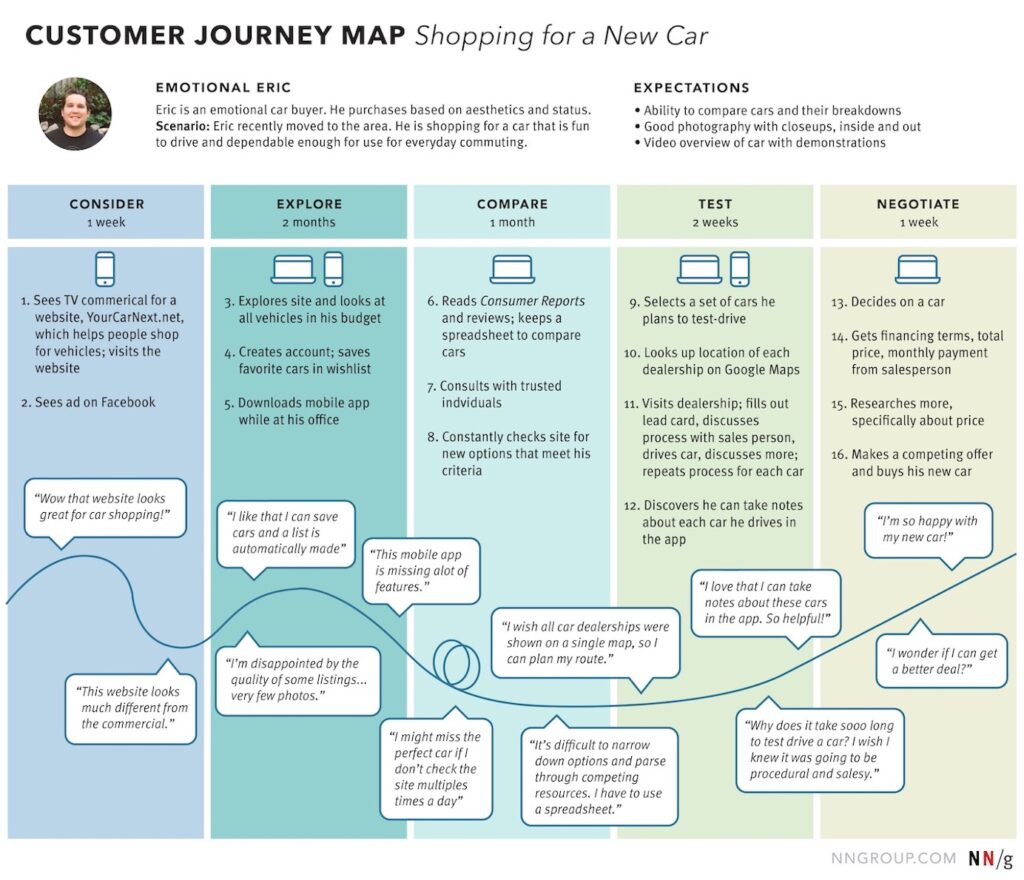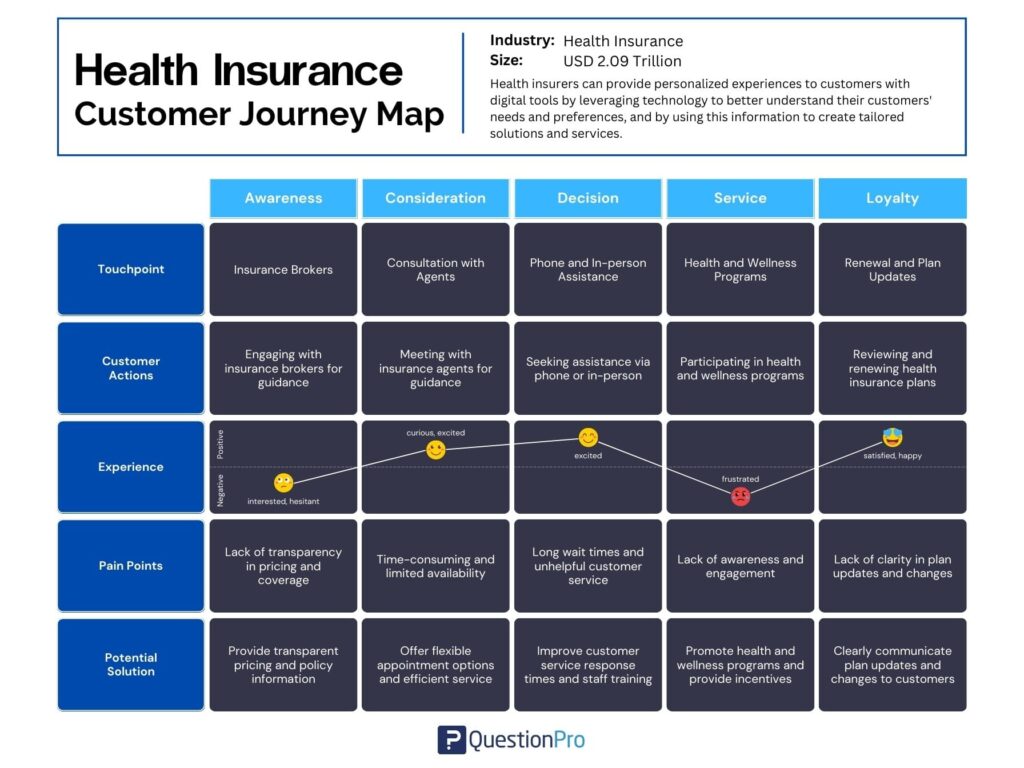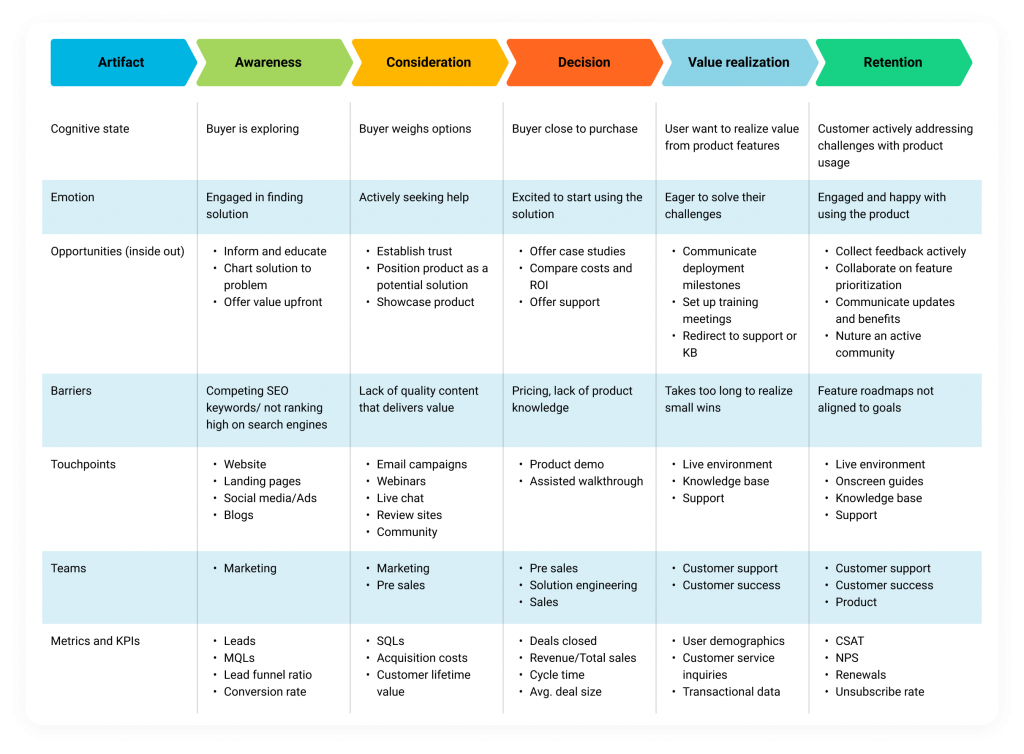If you want to drive customers from search engines, you must understand what your customers are going through, their customer journey.
Note that this article is the concept introduction. I’m going to dive deeper into using customer journeys in search engine marketing in future articles.
Before going further, make sure you read my post on marketing personas. That’s another fundamental marketing tool to help you attract the right customers from search engines.
Now, let’s dive into the concept of customer journey.
Definition
Steps your customers take from problem awareness to solution and beyond.
Why is it important?
Understanding the steps your customer takes allows you to optimize those customer touchpoints. This helps you make the right choice of what digital marketing channels to use and what content to create at each stage of the customer journey.
Stages
Each business can have its own set of customer journey stages. However, here’s a general framework of customer journey stages you can start with.
Awareness
At this stage your customer is becoming aware of the problem and starts the search for solutions. Customers tend to look at informational articles trying to understand how to deal with their pains.
Informational articles aimed at explaining your service is the most useful content type at this point. Here’s a few examples:
- Blog Posts: Create informative blog posts addressing common problems or questions your audience may have. This establishes your business as a helpful resource.
- Social Media Posts: Engage your audience on platforms like Instagram, Facebook, or Twitter. Share visually appealing content, industry insights, and intriguing facts to capture attention.
- Infographics: Visual content is compelling. Design infographics that convey key information about your products or services in a visually appealing way.
- Educational Videos: Produce short videos introducing your business, explaining your mission, or providing quick tips. Video content is highly shareable and helps in brand recall.
- Podcasts: Host or participate in podcasts relevant to your industry. This allows you to reach a broader audience and establish authority in your field.
Consideration
Now that the customers is educated on the issue, they start to look at companies that solve their pain points. Guide them towards understanding how your offerings meet their needs.
Informational content describing alternatives for potential customers work well at this stage. Examples include:
- Product Comparison Guides: Create detailed guides comparing your products or services with alternatives in the market. Highlight your unique features and benefits.
- Case Studies: Showcase real-life examples of how your product or service has solved problems for others. Include testimonials and measurable results.
- Expert Reviews: Share reviews from industry experts or influencers. This adds credibility and can influence decisions positively.
- Webinars or Demos: Conduct webinars or provide live demos to give a more in-depth look at your offerings. This helps prospects understand the value they’ll receive.
- FAQs and How-To Guides: Anticipate questions your audience might have and create content addressing those queries. How-to guides can demonstrate the practical use of your products.
Decision
The prospective customer has reviewed and narrowed down the list of vendors, ideally to just one – you. But it’s just the middle of the journey.
During the decision stage, focus on providing content that helps potential customers finalize their choice. Examples of content for the decision stage include:
- Product Comparisons: Create content that compares your product or service with alternatives in the market. Highlight the unique features and advantages that set you apart.
- Customer Testimonials and Case Studies: Showcase success stories and experiences of previous customers. Real-life examples can build trust and demonstrate the value you deliver.
- Free Trials or Demos: Offer a hands-on experience through free trials or product demonstrations. This allows customers to understand how your offering works and how it addresses their specific needs.
- FAQs and Troubleshooting Guides: Anticipate questions and concerns customers may have during the decision-making process. Provide comprehensive FAQs and troubleshooting guides to address these inquiries.
- Limited-Time Offers or Discounts: Create a sense of urgency by offering exclusive deals or discounts. Limited-time offers can encourage customers to make a decision sooner rather than later.
Advocacy
At this stage you’ve got the customer. But it’s not over yet, if you want to amplify your digital marketing efforts and their effects on sales.
This stage is often ignored, yet focusing on it will raise the effectiveness of your digital marketing efforts substantially. I’m paraphrasing here but, as the old saying goes, it’s cheaper to sell to existing customers than to attract new ones.
The focus of this stage is content that helps the customer a) confirm that they made the right decision, and b) provide them with ways to spread the word (i.e. leave a review).
Content examples for the advocacy stage include:
- Testimonials and Case Studies: Showcase success stories and positive experiences from satisfied customers. Highlight specific benefits or outcomes to build trust with potential advocates.
- Referral Programs: Encourage existing customers to refer others by offering incentives or discounts. Create clear and enticing messages to explain the benefits of referring your business.
- User-Generated Content: Share content created by your customers, such as photos, reviews, or testimonials. This not only provides authentic perspectives but also engages your community.
- Exclusive Loyalty Programs: Reward loyal customers with exclusive perks or discounts. Make them feel appreciated for their ongoing support and encourage them to continue advocating for your brand.
- Interactive Content: Engage your audience with polls, surveys, or interactive campaigns. This not only keeps them involved but also provides valuable feedback and insights.
Email marketing plays a big part here. Make sure you have the tools and internal processes to help you maintain and strengthen the relationship with your customers.
Lets now look at some real-life customer journey examples.
Examples
Now that you understand the general framework, let’s look at the actual examples successful companies use to understand and document their customer journeys.
Shopping for a new car
This map outlines the steps involved in researching, test-driving, and purchasing a new car. It offers a broad overview, narrating the overall experience from the user’s point of view. Check this map’s analysis at Nielsen Norman Group.

Shopping for health insurance
In the densely populated finance, insurance, and banking sectors, where numerous companies vie for customers, utilizing insights from customer experiences could be a distinguishing factor. Here’s an example of a health insurance customer journey I found at QuestionPro.

SaaS B2B customer journey
This example shows a customer journey map for a software-as-a-service company selling to other businesses. Find more examples in this article by Freshworks.

Your next step should be to create a customer journey map for your business. Keep in mind there’s no ideal path. Create a map to understand your customers at each stage of their customer journey. Review the results and adjust the map if necessary.
